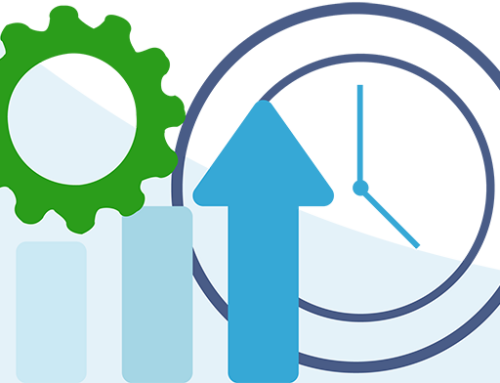This article written by Victoria Cameron and Laura Redmond originally appeared on the Intuit Accountants Blog.
Whether you are performing work yourself or delegating to staff, managing workflow for your practice is critical.
When we talk about workflow, we’re talking about a defined sequence of tasks that is planned and repeatable. It is the transformation of resources into services. Workflow management is a system to organize the setup, performance and tracking of workflow, whether that is a paper checklist, an Excel spreadsheet or a workflow app. Meanwhile, practice management is a system to organize the workflow from the perspective of the firm.
There are four components we’ve found that are key to developing a good practice management plan. Whether you use a prepackaged software system or develop your own homegrown solution, these four areas should be addressed:
- Identify uses of technology to improve external and internal communications
- Define how to organize staff task management systems and task resources for supporting the task completion
- Analyze and allocate practice resources
- Recognize the need to be deliberate about integrating systems
Communications
Managing communications between you, your staff, your clients and vendors is the first building block of good practice management. Real time communications involve both participants being present, whether in a virtual meeting, on the phone, or face to face. Non-linear communications like email, instant messaging, and texting can be more efficient when one party is unavailable—but for some issues, it’s better to wait to connect in real time.
Portals for clients and vendors are an especially helpful form of non-linear communications that can save everyone time. A client request for new work could log itself directly on your task list, or an invoice could be paid and updated directly to your accounting system. Portals also allow you to manage documents more seamlessly, and with better security than exchanging via email.
When choosing communications systems, think about a couple of things. First is accessibility. Choose something that will work on all types of devices—and with the other software in your internal systems. Secondly, choose a system that is self-documenting. You want your virtual meeting software to allow you to record your sessions, and your email client to integrate with your CRM, rather than documenting it manually.
Task Management
Task Management is all about the to-do list: what needs to be done, when it is due, what is the highest priority, and how you do it. Make sure your system for recording tasks is easily maintained. Consider where the checklist (or spreadsheet, or workflow app) will be stored and how staff will access it. How will tasks be added to the list, and what happens if multiple people access or update it at the same time? Is it difficult to schedule various recurring patterns for different tasks? How do you know which tasks are completed or are high priority?
One important aspect of task management is providing resources on how to complete tasks. This can include step-by-step instructions, web links to procedure guides or websites, and client information like passwords, tax ID number, contacts and anything else necessary to do the task. It can also include resources for communicating with the client and with other team members, reassigning activities to others, and viewing previous activities for a client. These resources will ensure that the work is completed efficiently and consistently.
Practice Management
Next, you want to turn that task list into billable dollars, and help you analyze results. Practice management comprises of allocating company resources, time tracking and management, billing, and key performance indicators (KPIs).
A key part of allocating resources is delegating work to your staff. When doing so, consider whether your staff feels empowered to do the work autonomously. Does your system give you the means to delegate without micromanaging? As a manager, can you easily keep track of what everyone is working on? Do you have enough information on how long tasks are taking to make informed hiring decisions?
Time tracking is an issue in itself. Keeping track of how long tasks take is one aspect—including estimated vs. actual durations and the average duration over multiple instances. But, what if your staff are performing work that isn’t being recorded or is billed to clients? Can you tell if they are working efficiently based on an hourly or fixed-fee rate?
Your workflow management system needs to be able to sync well with your accounting system, so that you aren’t wasting time re-entering data. Consider whether you need time entered by your staff to flow through to your accounting system to create an invoice? Do you need it to flow to your payroll system for payday?
Whatever system you use, KPIs should be available as an end result. Some common KPIs include billable vs. non-billable time, staff vs. partner time, task estimates vs. actual time and monthly projected billings. These are the types of metrics you want to monitor to ensure that you can actively manage your practice—before it manages you. Once you have a handle on all the moving parts, you can make appropriate adjustments to plan for growth and profitability.
Integrating Systems
Be thoughtful when designing your system. Use systems that share data. Without deliberate planning, temporary stopgap solutions can become permanent—and you don’t want an inefficient, piecemeal workflow being set in stone.
There are a lot of great apps on the market that have a specific niche that can really automate some of your manual processes and make you more efficient and profitable. As you design your ecosystem, think about the solutions you need and how they can integrate with each other to share data. Even a permanent solution needs to be revisited. Keep up with new technologies and integrations. Our world is continually changing, and it is critical to be flexible and willing to adapt.




Thanks for sharing!! Managing workflow for the accounting service is responsible task. Communications, task Management, practice management, integrating systems are the key components for developing a good accounting practice.
[…] their article on managing workflow in your accounting practice, Cloud Consultancy partners Victoria Cameron and Laura Redmond call communications “the first […]